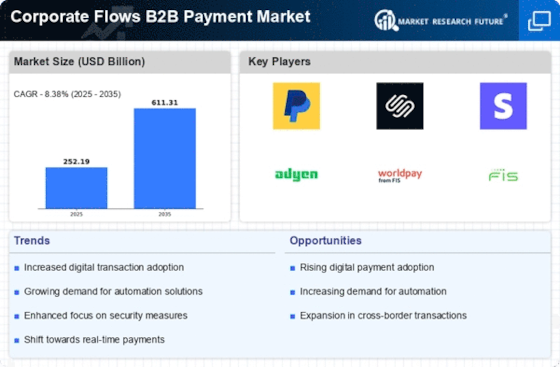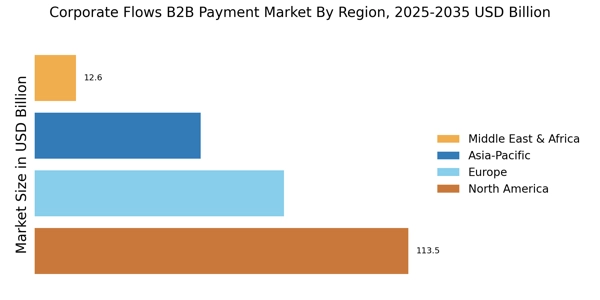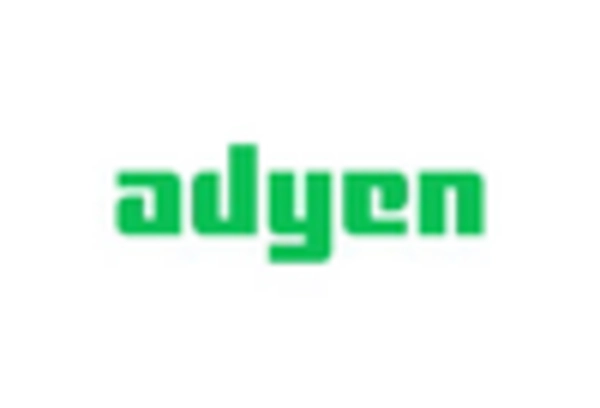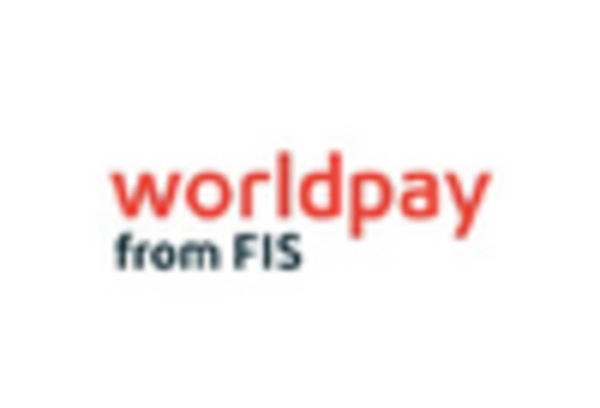The Corporate Flows B2B Payment Market is currently characterized by a dynamic competitive landscape, driven by rapid technological advancements and evolving customer expectations. Key players such as PayPal (US), Stripe (US), and Adyen (NL) are at the forefront, each adopting distinct strategies to enhance their market positioning. PayPal (US) continues to innovate its payment solutions, focusing on integrating advanced analytics and machine learning to streamline transaction processes. Meanwhile, Stripe (US) emphasizes its developer-friendly platform, which facilitates seamless integration for businesses, thereby enhancing user experience. Adyen (NL) is strategically expanding its global footprint, leveraging partnerships with local payment providers to cater to diverse market needs. Collectively, these strategies not only bolster their competitive edge but also contribute to a more interconnected and efficient payment ecosystem.
In terms of business tactics, companies are increasingly localizing their services to better meet regional demands, which appears to be a critical factor in their operational success. The market structure is moderately fragmented, with a mix of established players and emerging fintech startups vying for market share. This fragmentation allows for a variety of innovative solutions to flourish, as companies seek to differentiate themselves through unique offerings and customer-centric approaches.
In August 2025, PayPal (US) announced a strategic partnership with a leading blockchain technology firm to enhance its cross-border payment capabilities. This move is significant as it positions PayPal to leverage blockchain's inherent advantages, such as transparency and reduced transaction costs, potentially reshaping how businesses conduct international transactions. Such innovations may attract a broader customer base, particularly among enterprises seeking efficient payment solutions.
In September 2025, Stripe (US) launched a new suite of tools aimed at automating invoicing and payment reconciliation for businesses. This initiative is crucial as it addresses a common pain point for many companies, thereby enhancing operational efficiency and reducing administrative burdens. By streamlining these processes, Stripe not only strengthens its value proposition but also reinforces its commitment to supporting businesses in their digital transformation journeys.
In October 2025, Adyen (NL) expanded its payment processing services to include cryptocurrency transactions, responding to the growing demand for digital currencies in B2B transactions. This strategic pivot is indicative of Adyen's adaptability and foresight in recognizing emerging trends. By incorporating cryptocurrency, Adyen positions itself as a forward-thinking player, likely attracting tech-savvy businesses looking to innovate their payment methods.
As of October 2025, the competitive trends within the Corporate Flows B2B Payment Market are increasingly defined by digitalization, sustainability, and the integration of artificial intelligence. Strategic alliances are becoming more prevalent, as companies recognize the value of collaboration in enhancing service offerings and expanding market reach. Looking ahead, it is anticipated that competitive differentiation will increasingly pivot from traditional price-based strategies to a focus on innovation, technological advancements, and the reliability of supply chains. This shift underscores the necessity for companies to remain agile and responsive to the evolving landscape.


















Leave a Comment